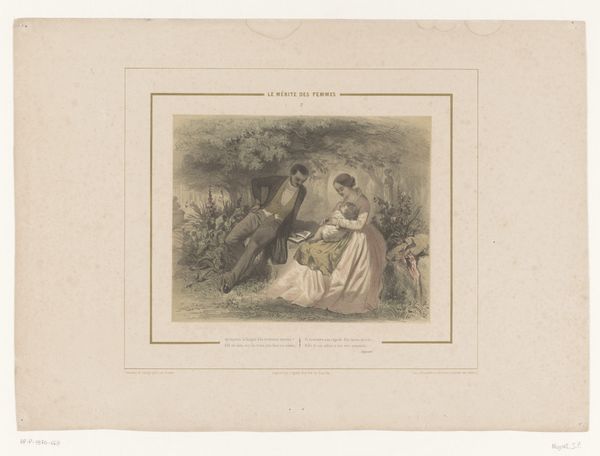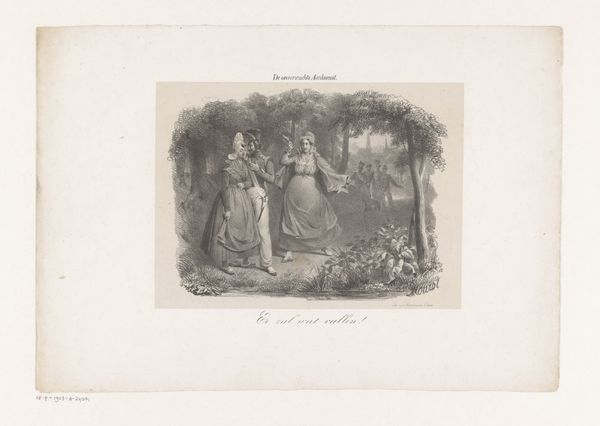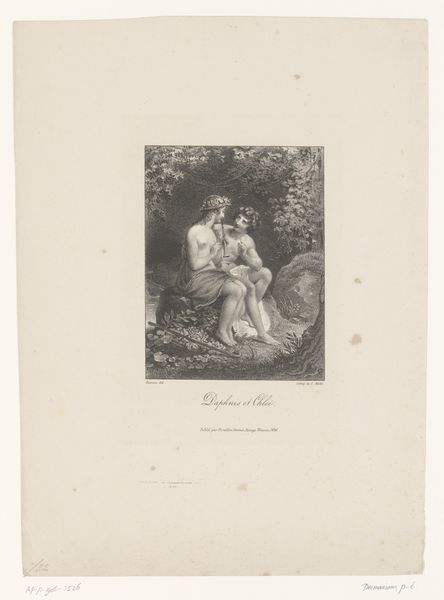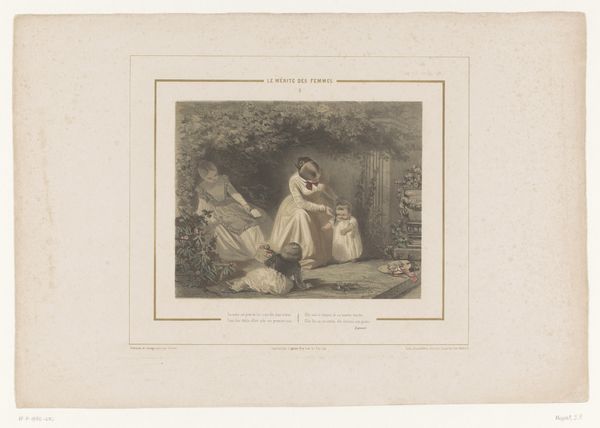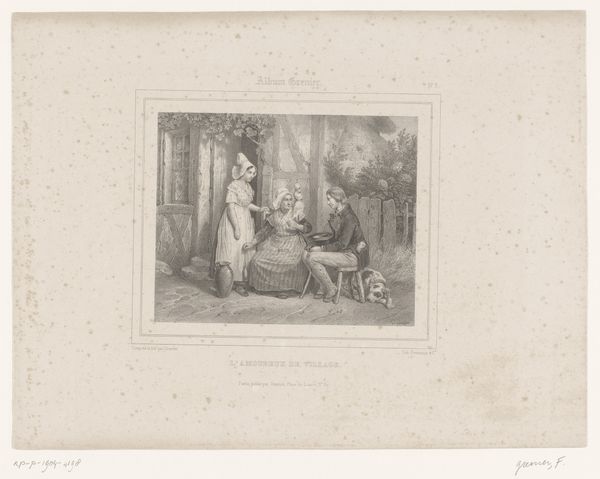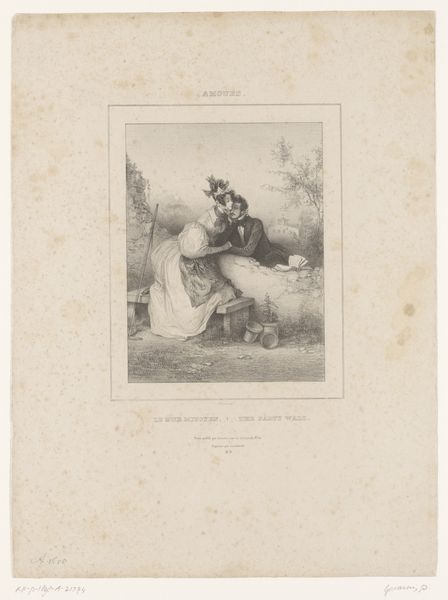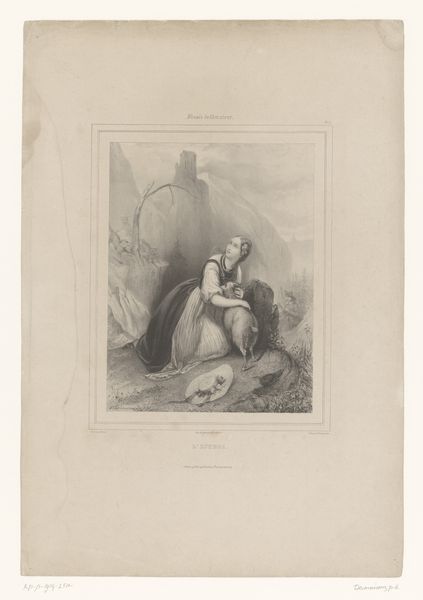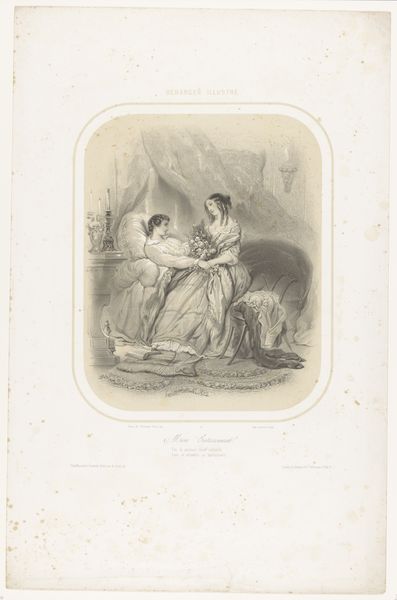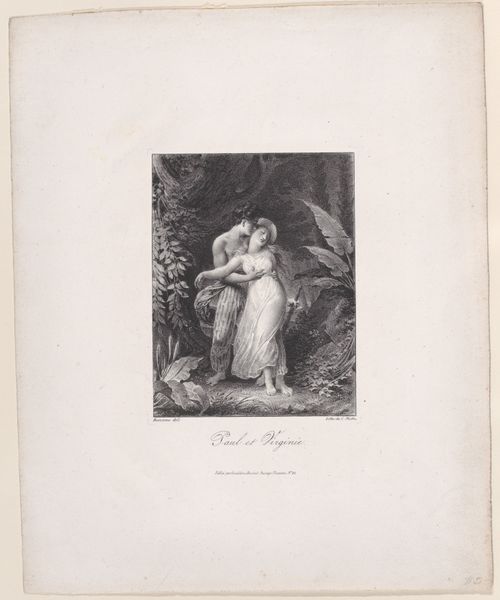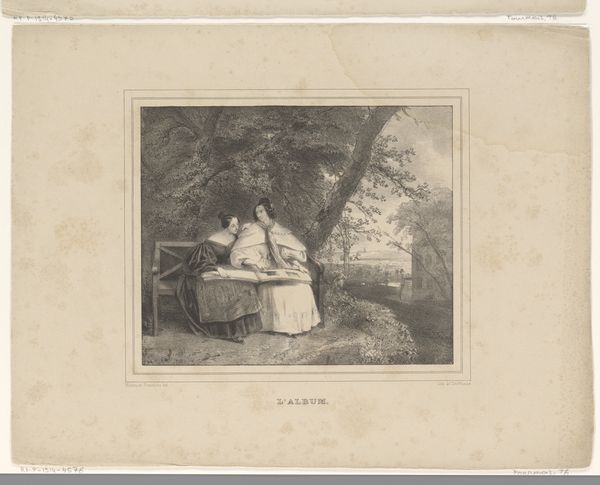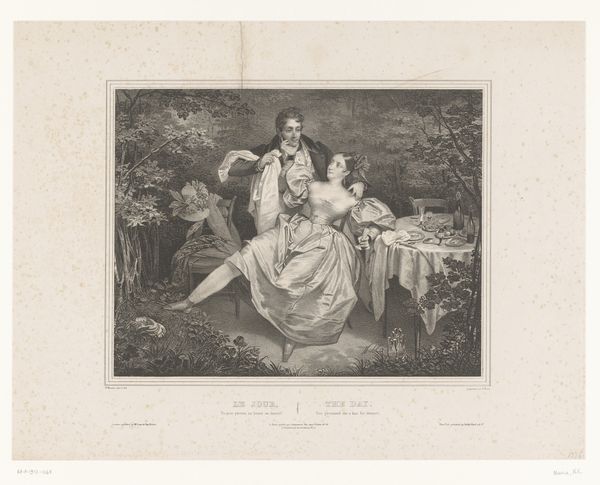
Dimensions: height 304 mm, width 447 mm
Copyright: Rijks Museum: Open Domain
Curator: This piece evokes such a serene, almost wistful atmosphere. Editor: It certainly does. We're looking at an engraving from between 1831 and 1871, "Man vraagt vrouw om haar liefde," or "Man Asks Woman for Her Love" in English, created by Jean-Pierre Moynet. The print shows a man kneeling before a woman, presumably professing his feelings. Curator: The figures are framed by what appears to be a dark copse, contrasting with the woman's bright dress. That dress becomes almost symbolic in the scene; it looks soft and inviting against his dark clothes, making me wonder about societal expectations of women at that time. The man in dark clothing, head bowed on bended knee looks to have assumed a servile, even subordinate pose. Is he kneeling in devotion? In shame? Both? Editor: Well, the print itself falls within a Romantic sensibility that influenced much of 19th-century artistic production. The way the scene seems to be set outside of modern concerns suggests a return to a pure, less complicated state of the world. It’s a rejection of industrial progress. Consider this kind of imagery alongside what was being displayed in the Paris Salon. "Genre paintings," as they're often called, allowed everyday folk to feel moved and impassioned like the heroes from mythic, Classical pasts in more austere or inaccessible work. Curator: The choice to present such an intimate moment for public consumption then suggests these overtures weren’t just a private act. Their very printing served a pedagogical purpose. Maybe Moynet offers us a manual for middle-class courtship here? To me, the setting speaks more of personal longing than of some greater truth; that dark forest reminds me of how tangled love can be. The landscape looks equally unsure: are these two at a place of clearing, or simply swallowed deeper into confusion? Editor: It's precisely that tension that made these genre scenes so effective within the rapidly changing social landscapes of Europe. We see new forms of commerce bringing changes to relationships. Public prints make love legible as it is practiced, in the hopes that their display provides rules for successful practice within bourgeois communities. Curator: Interesting. Still, seeing it now, the power dynamics read somewhat differently, making me reflect on the shifts in cultural ideals. Even as techniques like engraving preserve details beautifully, how we view love itself continually shifts and re-forms. Editor: I agree. Seeing how historical narratives are constructed, negotiated, and preserved through artworks such as this continues to compel. It offers an important means by which our public can observe how power, affect, and society operate, and have operated across time.
Comments
No comments
Be the first to comment and join the conversation on the ultimate creative platform.
